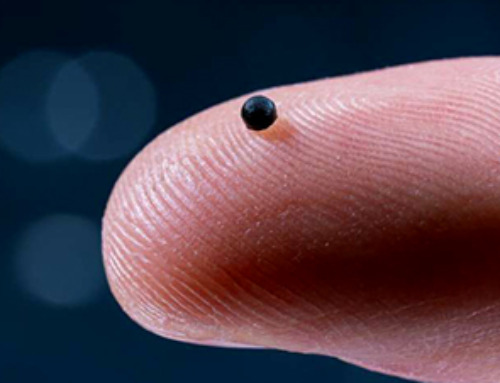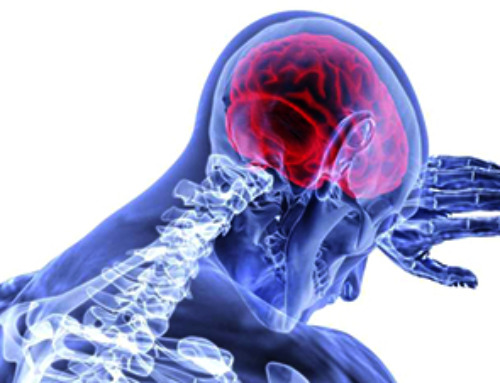In a recent study published in Science Advances, a group of researchers assessed whether dendritic spine head diameter in the temporal cortex is a better predictor of episodic memory performance in older adults than synapse quantity, accounting for β amyloid (Aβ) plaques (Clusters of protein fragments in the brain), neurofibrillary tangles (NFTs) (Twisted protein fibers inside brain cells), and sex.
Background
Episodic memory, essential for recalling personal experiences, declines with age and neurodegenerative diseases, especially due to temporal cortex injury. Dendritic spines, key postsynaptic compartments in the brain, influence synapse strength and are crucial for memory. Spine loss naturally occurs with aging, particularly in regions vital for memory, and is more strongly associated with memory impairment in Alzheimer’s disease (AD) (A progressive brain disorder causing memory loss) than Aβ plaques or NFTs.
Further research is needed to clarify how specific features of dendritic spines contribute to memory function in aging beyond the effects of natural spine loss and common neurodegenerative pathologies.
About the study
Postmortem samples of brain areas Brodmann area (BA) 6 and BA37 were obtained from participants in the Religious Orders Study and Rush Memory and Aging Project (ROSMAP), which includes individuals who enroll without known dementia and agree to annual clinical evaluations and brain donation upon death.
The study was approved by an institutional review board at Rush University Medical Center. All participants provided informed consent, including consent for brain donation and sharing of their resources. The samples analyzed in this study covered a range of brain pathologies and cognitive scores, with appropriately sized frozen tissue samples available for experiments.
Cognitive testing of ROSMAP participants included assessments of episodic memory, perceptual speed, visuospatial ability, semantic memory, and working memory, with composite scores calculated for each domain. Additionally, the Mini-Mental State Examination (MMSE) was administered, and clinical diagnoses of major depressive disorder were made based on established criteria.
Dendritic spines and synaptic markers were visualized using Golgi-Cox staining of brain samples from BA6 and BA37. Imaging of dendrites was performed by a blinded experimenter using bright-field microscopy at high magnification. Dendritic segments meeting specific criteria were selected for analysis, and 3D digital reconstructions of dendrites and spines were conducted using specialized software. Spine morphology was classified into various categories, and quantitative measurements were collected for analysis. In total, 45,763 μm of dendrite length from 2,157 neurons were analyzed, yielding data on 55,521 individual spines.
Statistical analyses involved a multistage approach to validate the generalizability of results. Dendritic spine traits were analyzed using LASSO (Least Absolute Shrinkage and Selection Operator) regression to identify which features most significantly contributed to episodic memory performance in older adults. Cross-validation techniques ensured model accuracy, and the results were replicated in an independent sample. Spearman correlations were used to explore relationships between dendritic spine features, pathology, and memory scores, with multiple comparisons controlled for using an appropriate false discovery rate.
Study results
Dendritic spines were sampled and analyzed from the frontal and temporal cortices of 128 individuals from the ROSMAP. These postmortem samples were taken from BA6 within the premotor cortex and BA37 within the temporal cortex. The participants, who had a mean age of 90.53 ± 6.06 years, displayed varying cognitive performance scores and levels of AD-related neuropathology. Using bright-field microscopy, dendritic spine density and morphology in BA37 and BA6 tissue slices were imaged at 60X magnification and reconstructed in three dimensions. The data were then analyzed to determine the relationship between dendritic spine features and episodic memory performance.
The datasets from BA37 and BA6 were subjected to a supervised learning algorithm to identify specific dendritic spine features that might predict episodic memory performance beyond the effects of other variables, such as AD-related neuropathology. The samples were divided into a discovery set (n = 63) and a validation set (n = 62), with three cases excluded due to missing data. LASSO regression was performed on the discovery set to identify the dendritic spine features most strongly associated with episodic memory function. The analysis revealed that spine head diameter in BA37 was the most significant predictor of episodic memory performance.
The results were validated using nested model cross-validation in the replication set, confirming that models including spine head diameter, along with NFTs, neuritic Aβ plaques, and sex, provided the best prediction of episodic memory. Removing spine length, density, and volume from the model further improved its accuracy, highlighting the importance of spine head diameter in the temporal cortex for memory function.
Conversely, LASSO regression on the BA6 dataset identified spine length as the strongest predictor of episodic memory performance, although its association was weaker compared to BA37 spine head diameter. Models incorporating BA6 spine features did not perform as well, indicating that the contribution of spine head diameter to memory performance is specific to the BA37 temporal cortex.
Further analysis showed a significant positive correlation between BA37 spine head diameter and episodic memory score, even after controlling for multiple comparisons. In contrast, BA37 spine density did not significantly correlate with cognitive scores or AD-related pathology, and no significant correlations were found between BA6 spine features and cognition or pathology measures.
Conclusions
To summarize, using tissue samples from 128 ROSMAP participants, the analysis revealed that larger dendritic spine head diameters in the temporal cortex were associated with better episodic memory performance, while spine density showed no significant effect. These findings suggest that synaptic strength, rather than the number of synapses, is crucial for maintaining memory in older adults, with implications for targeted therapeutic strategies in preclinical AD.
- Courtney K. Walker et al. Dendritic spine head diameter predicts episodic memory performance in older adults.Sci. Adv.(2024).
DOI:10.1126/sciadv.adn5181 https://www.science.org/doi/10.1126/sciadv.adn5181
News
Magnetic nanoparticles that successfully navigate complex blood vessels may be ready for clinical trials
Every year, 12 million people worldwide suffer a stroke; many die or are permanently impaired. Currently, drugs are administered to dissolve the thrombus that blocks the blood vessel. These drugs spread throughout the entire [...]
Reviving Exhausted T Cells Sparks Powerful Cancer Tumor Elimination
Scientists have discovered how tumors secretly drain the energy from T cells—the immune system’s main cancer fighters—and how blocking that process can bring them back to life. The team found that cancer cells use [...]
Very low LDL-cholesterol correlates to fewer heart problems after stroke
Brigham and Women's Hospital's TIMI Study Group reports that in patients with prior ischemic stroke, very low achieved LDL-cholesterol correlated with fewer major adverse cardiovascular events and fewer recurrent strokes, without an apparent increase [...]
“Great Unified Microscope” Reveals Hidden Micro and Nano Worlds Inside Living Cells
University of Tokyo researchers have created a powerful new microscope that captures both forward- and back-scattered light at once, letting scientists see everything from large cell structures to tiny nanoscale particles in a single shot. Researchers [...]
Breakthrough Alzheimer’s Drug Has a Hidden Problem
Researchers in Japan found that although the Alzheimer’s drug lecanemab successfully removes amyloid plaques from the brain, it does not restore the brain’s waste-clearing system within the first few months of treatment. The study suggests that [...]
Concerning New Research Reveals Colon Cancer Is Skyrocketing in Adults Under 50
Colorectal cancer is striking younger adults at alarming rates, driven by lifestyle and genetic factors. Colorectal cancer (CRC) develops when abnormal cells grow uncontrollably in the colon or rectum, forming tumors that can eventually [...]
Scientists Discover a Natural, Non-Addictive Way To Block Pain That Could Replace Opioids
Scientists have discovered that the body can naturally dull pain through its own localized “benzodiazepine-like” peptides. A groundbreaking study led by a University of Leeds scientist has unveiled new insights into how the body manages pain, [...]
GLP-1 Drugs Like Ozempic Work, but New Research Reveals a Major Catch
Three new Cochrane reviews find evidence that GLP-1 drugs lead to clinically meaningful weight loss, though industry-funded studies raise concerns. Three new reviews from Cochrane have found that GLP-1 medications can lead to significant [...]
How a Palm-Sized Laser Could Change Medicine and Manufacturing
Researchers have developed an innovative and versatile system designed for a new generation of short-pulse lasers. Lasers that produce extremely short bursts of light are known for their remarkable precision, making them indispensable tools [...]
New nanoparticles stimulate the immune system to attack ovarian tumors
Cancer immunotherapy, which uses drugs that stimulate the body’s immune cells to attack tumors, is a promising approach to treating many types of cancer. However, it doesn’t work well for some tumors, including ovarian [...]
New Drug Kills Cancer 20,000x More Effectively With No Detectable Side Effects
By restructuring a common chemotherapy drug, scientists increased its potency by 20,000 times. In a significant step forward for cancer therapy, researchers at Northwestern University have redesigned the molecular structure of a well-known chemotherapy drug, greatly [...]
Lipid nanoparticles discovered that can deliver mRNA directly into heart muscle cells
Cardiovascular disease continues to be the leading cause of death worldwide. But advances in heart-failure therapeutics have stalled, largely due to the difficulty of delivering treatments at the cellular level. Now, a UC Berkeley-led [...]
The basic mechanisms of visual attention emerged over 500 million years ago, study suggests
The brain does not need its sophisticated cortex to interpret the visual world. A new study published in PLOS Biology demonstrates that a much older structure, the superior colliculus, contains the necessary circuitry to perform the [...]
AI Is Overheating. This New Technology Could Be the Fix
Engineers have developed a passive evaporative cooling membrane that dramatically improves heat removal for electronics and data centers Engineers at the University of California San Diego have created an innovative cooling system designed to greatly enhance [...]
New nanomedicine wipes out leukemia in animal study
In a promising advance for cancer treatment, Northwestern University scientists have re-engineered the molecular structure of a common chemotherapy drug, making it dramatically more soluble and effective and less toxic. In the new study, [...]
Mystery Solved: Scientists Find Cause for Unexplained, Deadly Diseases
A study reveals that a protein called RPA is essential for maintaining chromosome stability by stimulating telomerase. New findings from the University of Wisconsin-Madison suggest that problems with a key protein that helps preserve chromosome stability [...]





















